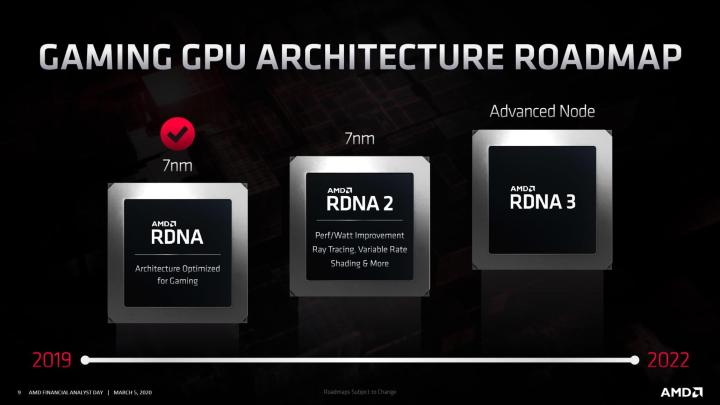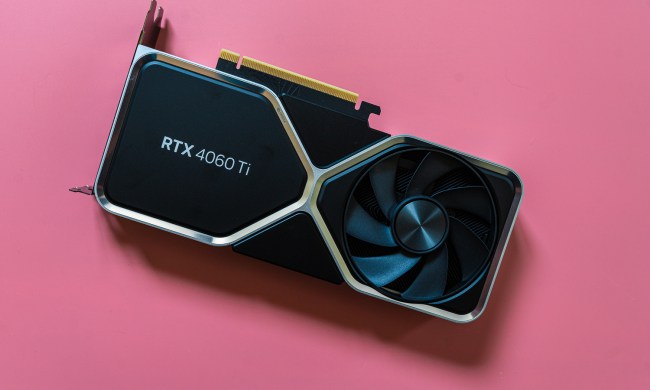After trailing rival Nvidia in the high-end GPU space, AMD finally has a high-end graphics card — complete with real-time ray tracing capabilities — in the form of the new Radeon RX 6000 family.
AMD is formally taking the wraps off its Radeon GPU. This new graphics card allows AMD to go head-to-head with the competing Nvidia GeForce RTX 3080 GPU. AMD teased the design and specifications of its Radeon card prior to launch, with executives poking fun at Nvidia by stating that the AMD GPUs won’t suffer the same shortage issues as the flagship GeForce card.

Unlike Nvidia’s PC-centric GPUs, the RDNA 2 architecture — also referred to as Navi 2x and nicknamed “Big Navi” by devoted gamers — that’s powering AMD’s GPU will not only be headed to gaming PCs and workstations, but will also be found in next-generation consoles, like Microsoft’s Xbox Series X and Sony’s
Radeon RX 6800 XT

One of the first PC
“The 6800 XT is purposefully designed to play all of your favorite AAA games at
The $650
During AMD’s presentation, the company positioned the RX 6800 XT against Nvidia’s flagship RTX 3080 GPU, showing that its card can also perform in
“As you can see, the 6800 XT not only delivers on
Radeon RX 6800

AMD next announced its most affordable new card, the Radeon RX 6800. Priced at $580 and coming November 18, the card was pitted against the RTX 2080 Ti in AMD’s benchmarks.
Based on pricing, AMD clearly intends this card to be a competitor to the Nvidia RTX 3070, though the Radeon RX 6800 is a bit more expensive.
One key difference highlighted by AMD is the RX 6800’s memory. It will have 16GB of GDDR6 memory, which is a lot for a $580
Radeon RX 6900 XT

Finally, AMD announced the RX 6900 XT as “one more GPU” to close the show.
“We knew that the RDNA 2 architecture could give gamers even more,” AMD CEO Lisa Su stated while unveiling the Radeon RX 6900 XT. This is AMD’s most powerful GPU that launched today and is built for “the ultimate in
The GPU ships with 80 compute units with a 2.25GHz boost clock and 16GB of GDDR6 memory. The 6900 XT has a 300-watt TDP, hitting 65% more performance per watt than the prior RDNA architecture.
With
This GPU will be available on December 8 starting at $999.
Here’s a summary of each card.
- Radeon RX 6800 – 60 CUs, 16GB GDDR6, $580, November 18
- Radeon RX 6800 XT – 72 CUs, 16GB GDDR6, $650, November 18
- Radeon RX 6900 XT – 80 CUs, 16GB GDDR6, $999, December 8
Big Navi’s architecture goes to infinity
“2020 is the year of the gamer,” Su proclaimed during the Radeon keynote presentation. AMD called it the most powerful GPU ever built, offering 50% better performance than last year’s RDNA architecture that it replaces, which already offers a 50% performance-per-watt over the old GCN architecture.
Though AMD is using the same 7nm process node as the prior RDNA platform, Su and her team say the company made significant process and architectural improvements to push for better performance-per-watt.
“We advanced all aspects of the compute unit design, leveraging techniques first developed for the CPUs,” said Laura Smith, graphics chief engineer. “We deployed pervasive fine-grained clock gating, [and] reimagined the pipeline to aggressively maximize performance while minimizing data movement. In combination, these elements make the compute units 30% more energy efficient, allowing them to be pushed faster.”
AMD solved the efficiency challenge by using a high-density, high-speed cache, and the company called this the Infinity Cache. The system helps minimize bottlenecks, latencies, and reduces power consumption. AMD claimed that its new custom libraries and high-speed design flows allow the new RDNA 2 to gain 30% faster frequencies using the same 7nm process node.
The company worked with Microsoft to bring DirectX 12 Ultimate features, such as DirectX
More power through overclocking

Gamers can get a further boost with a one-click Rage Mode, an overclocking feature built into the Radeon software package. This takes advantage of the overclocking built into the GPU, AMD said.
Another key feature is AMD Smart Access Memory, which can unlock more high-speed memory for gamers using a Ryzen processor.
“AMD Smart Access Memory unlocks the greater amount of high-speed memory from the AMD Radeon RX 6000 series
When Rage Mode is combined with Smart Access Memory, gamers can see up to a 13% uplift in performance.
Radeon Anti-Lag and Radeon Boost help to reduce latency that works with monitors supporting AMD’s FreeSync technology. This helps reduce latency by as much as 37%, AMD said, in games like Fortnite.
“For select games, Radeon Boost offers dynamic resolution in response to your mouse or controller inputs, leading to higher frame rates, and as a result, quicker responses to your input,” AMD said.



